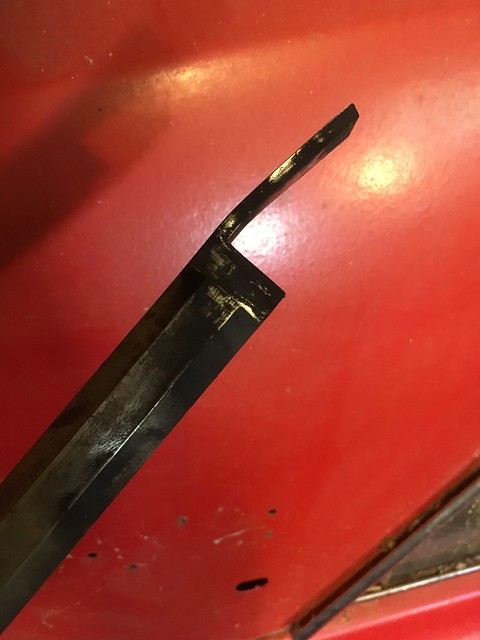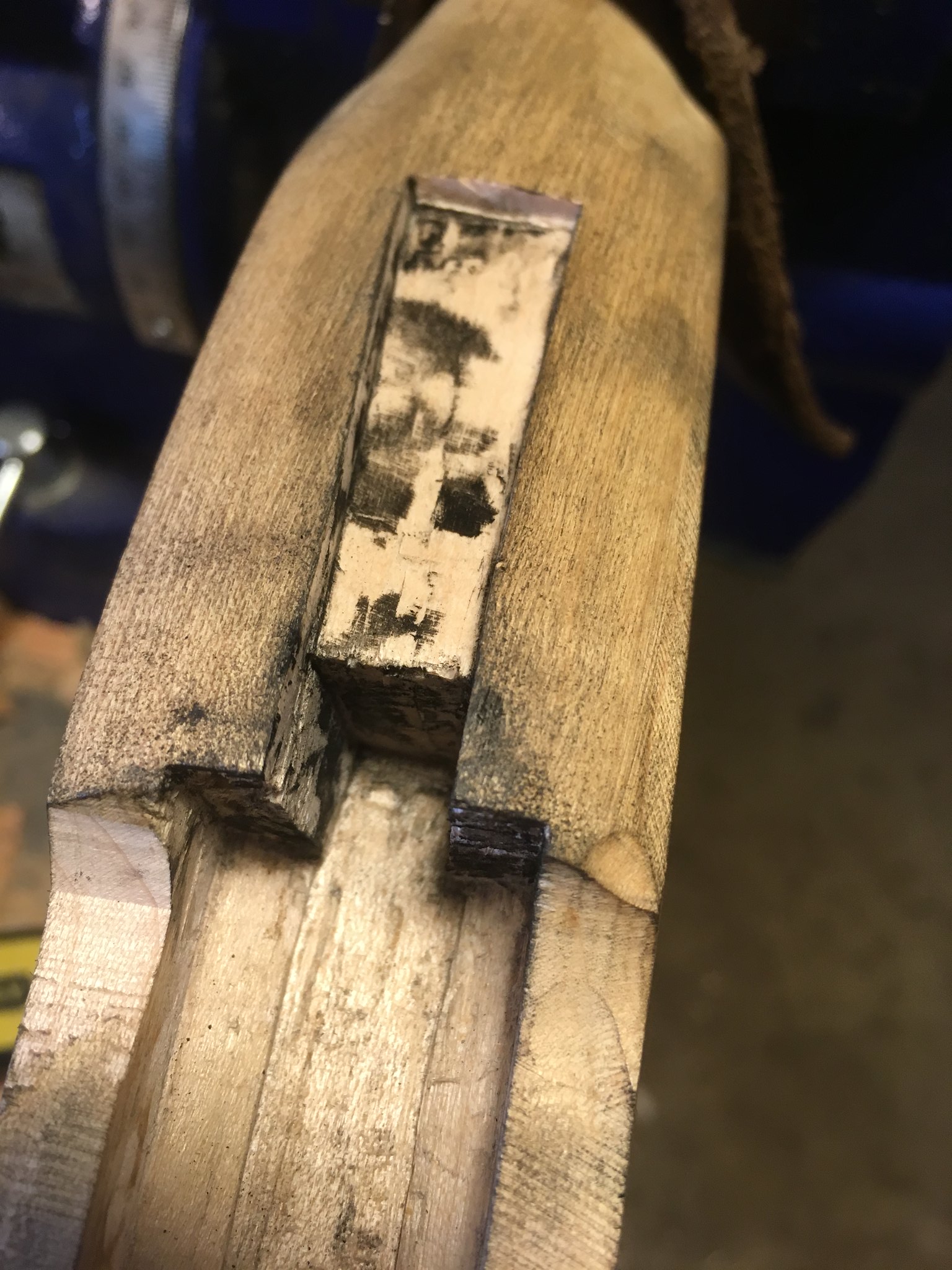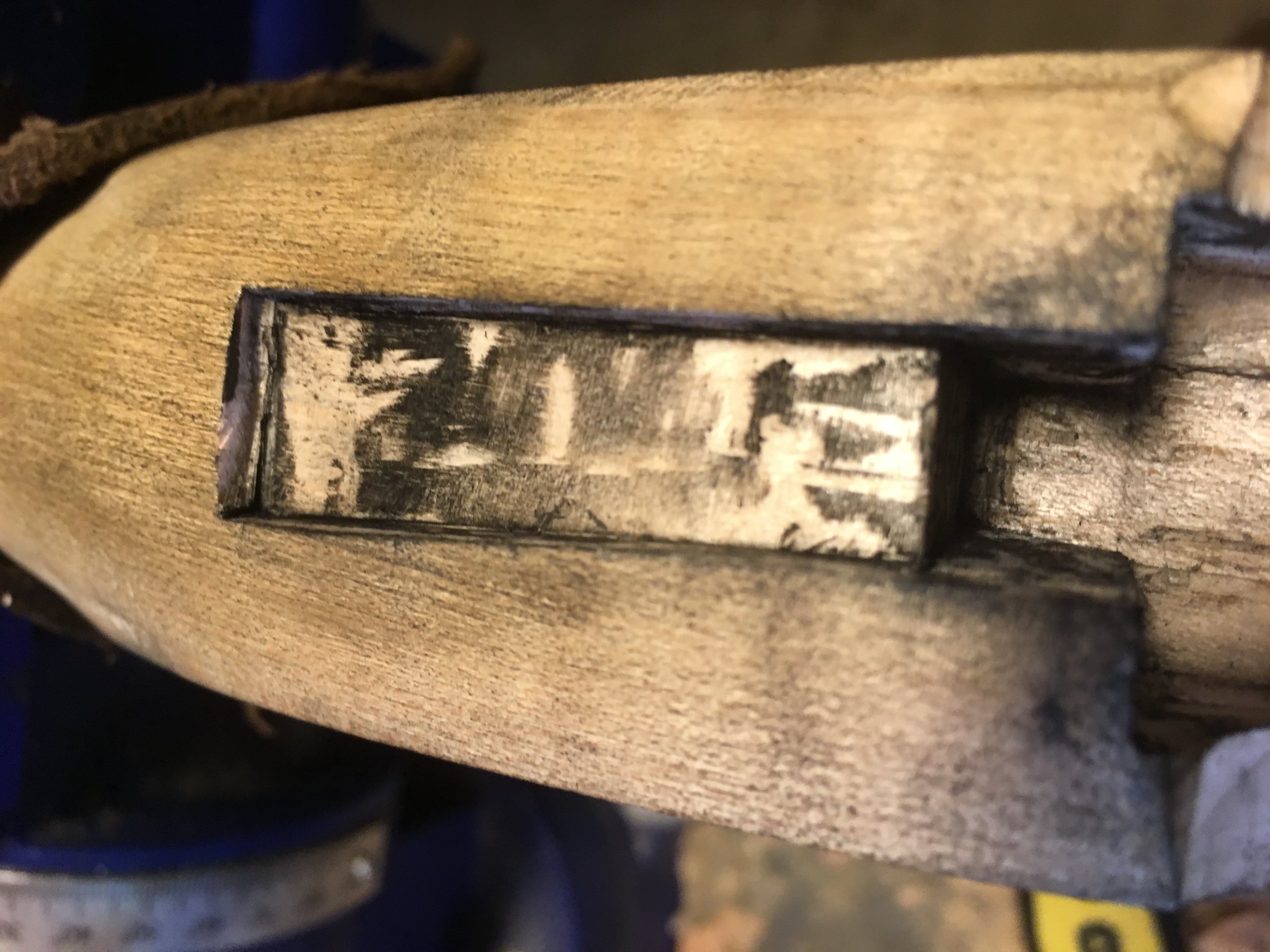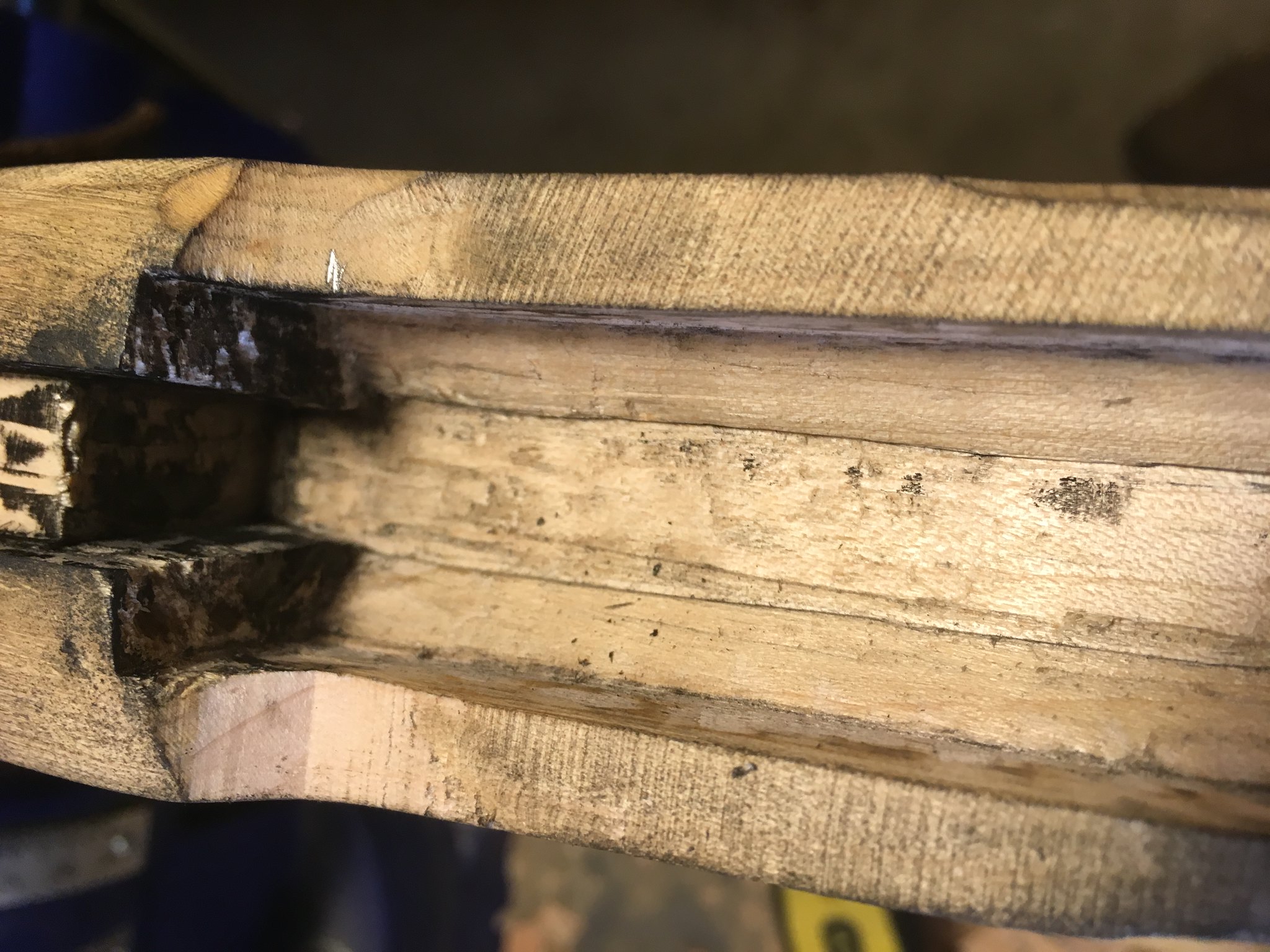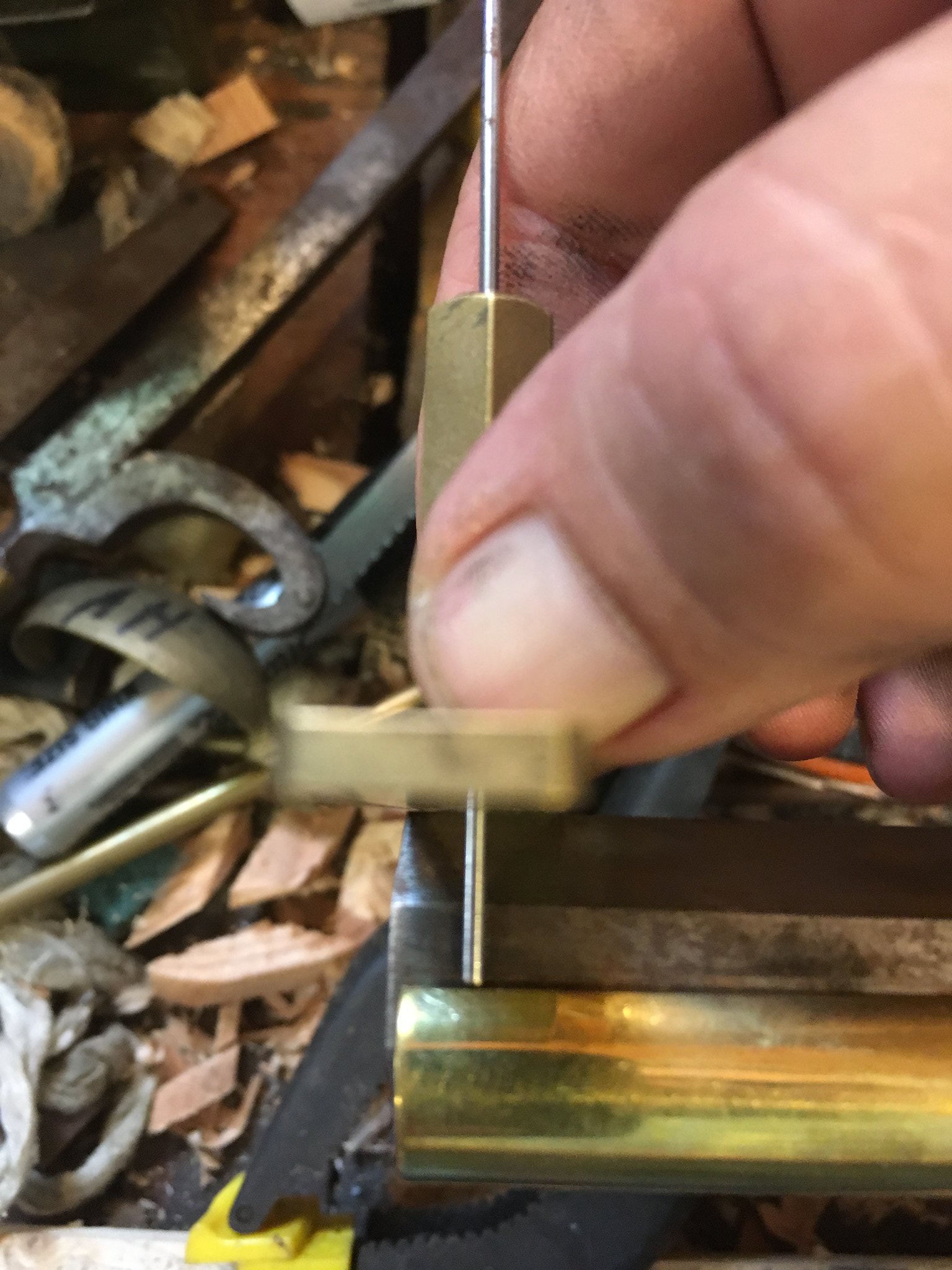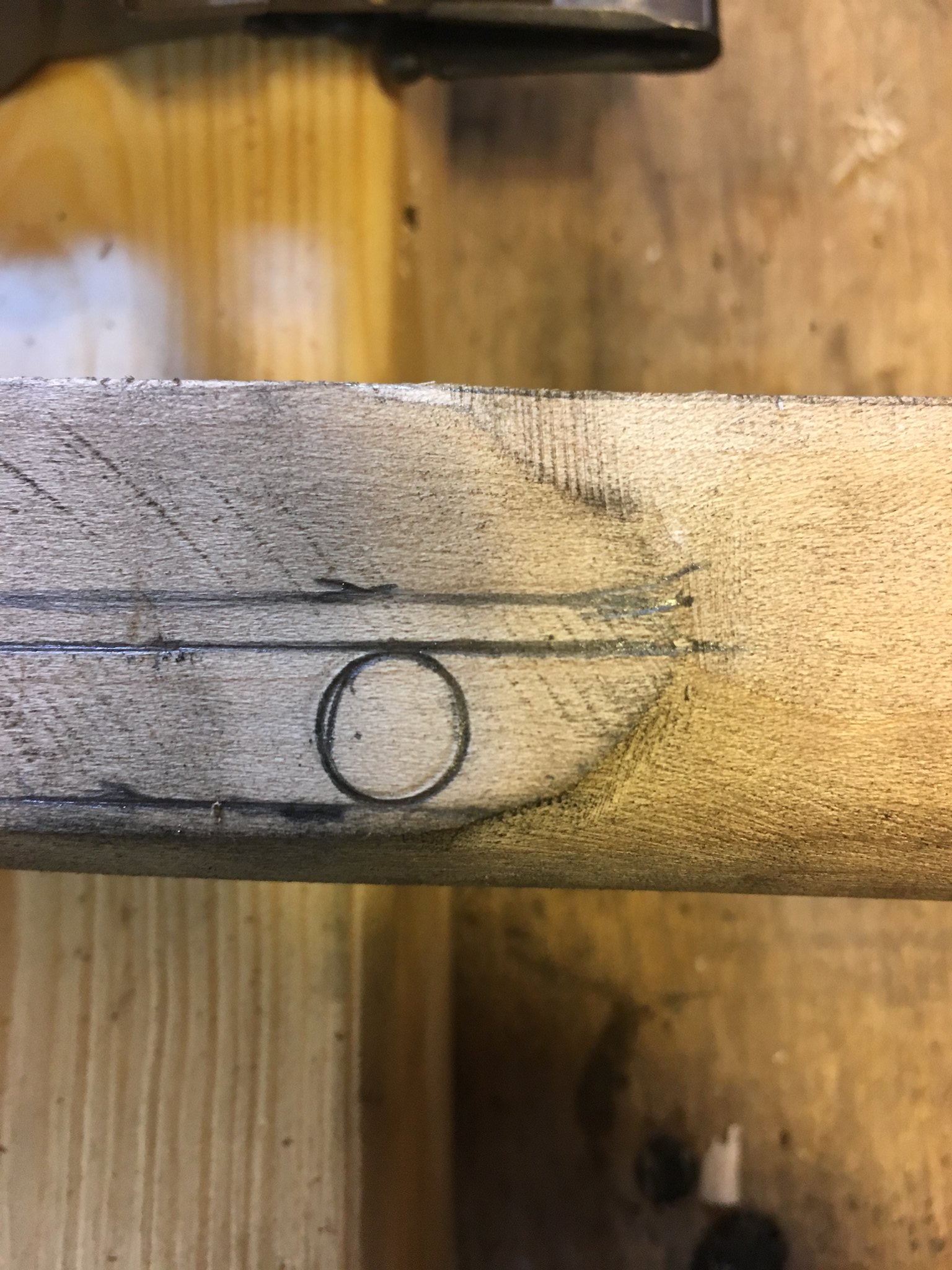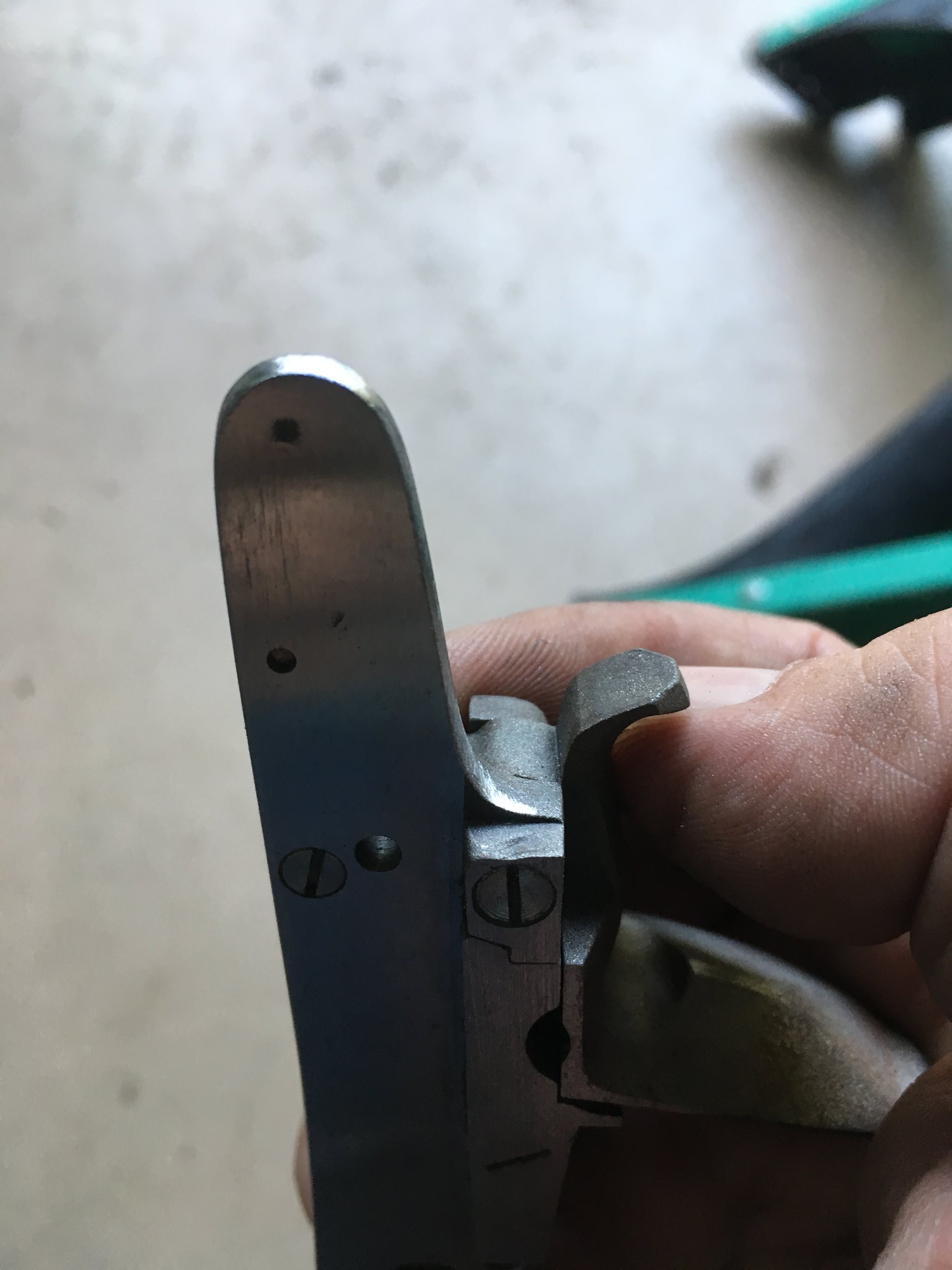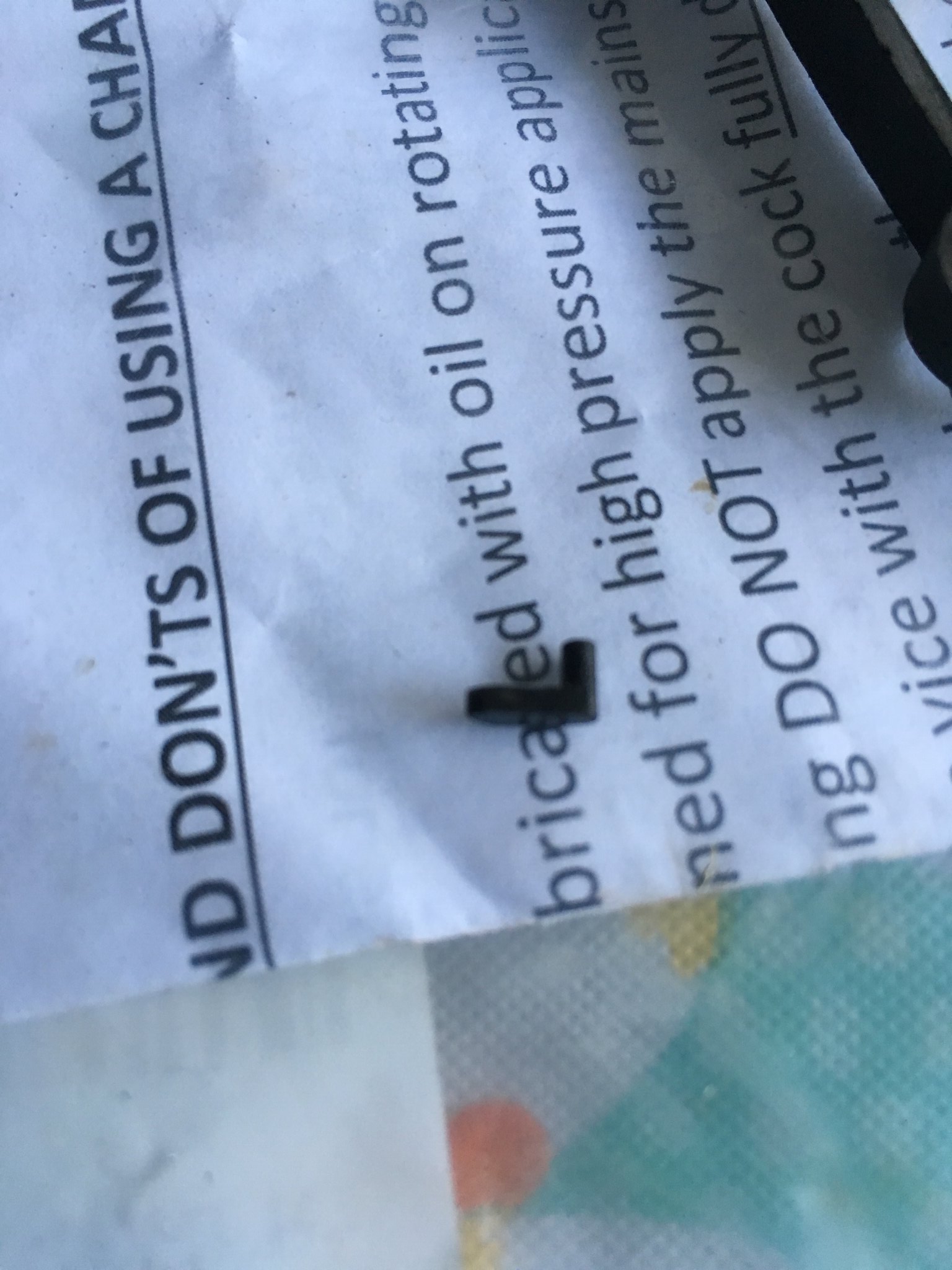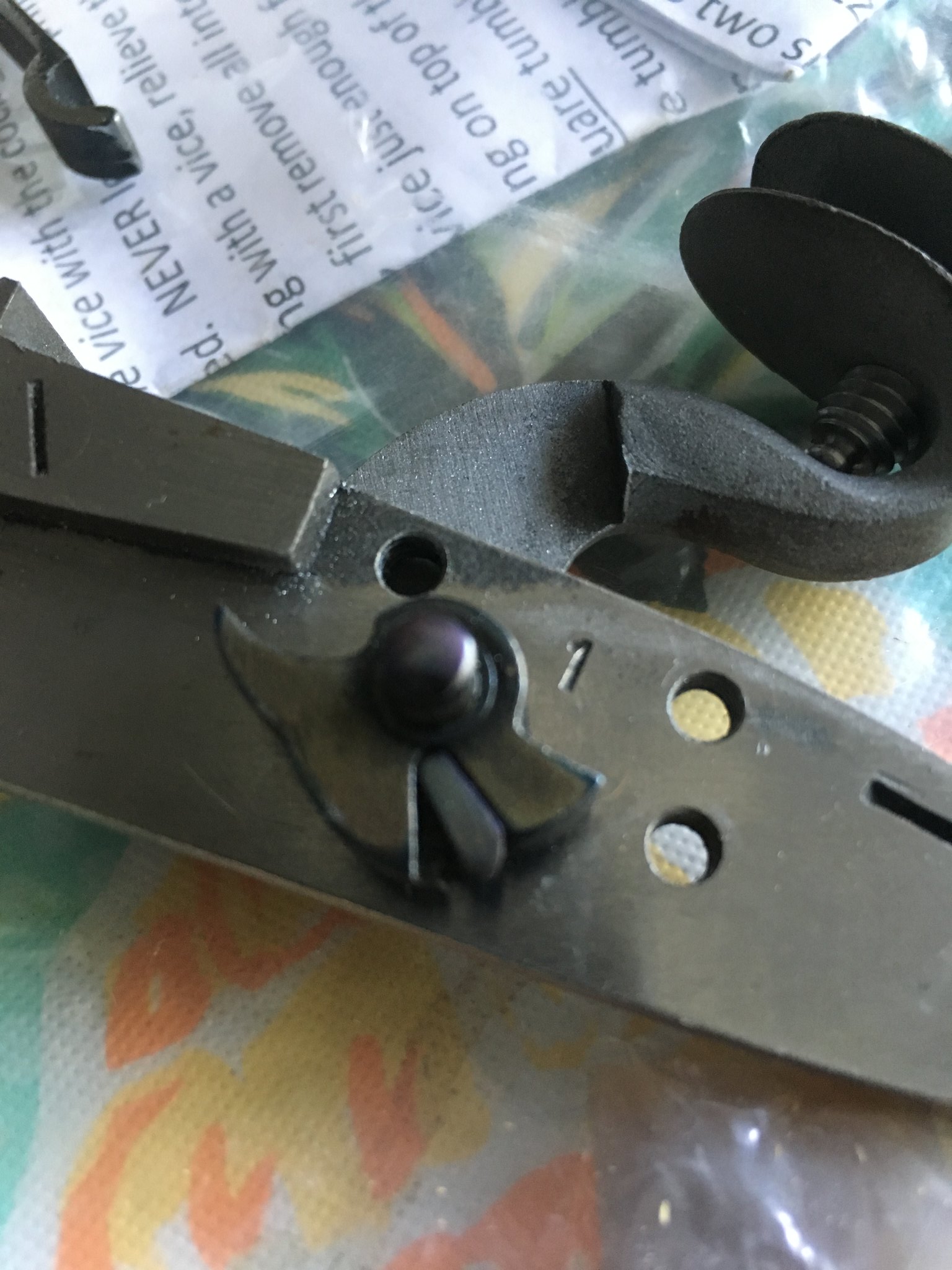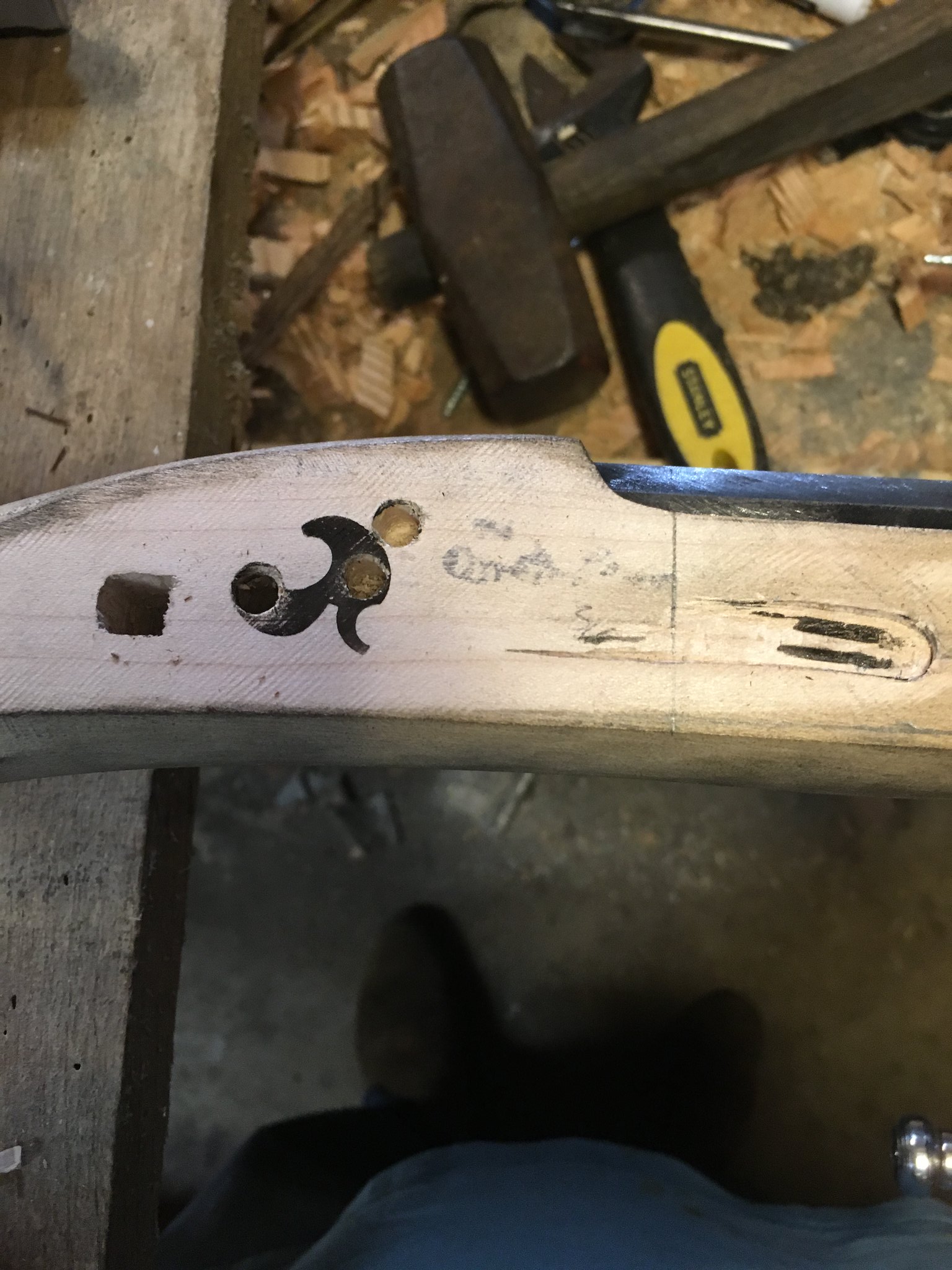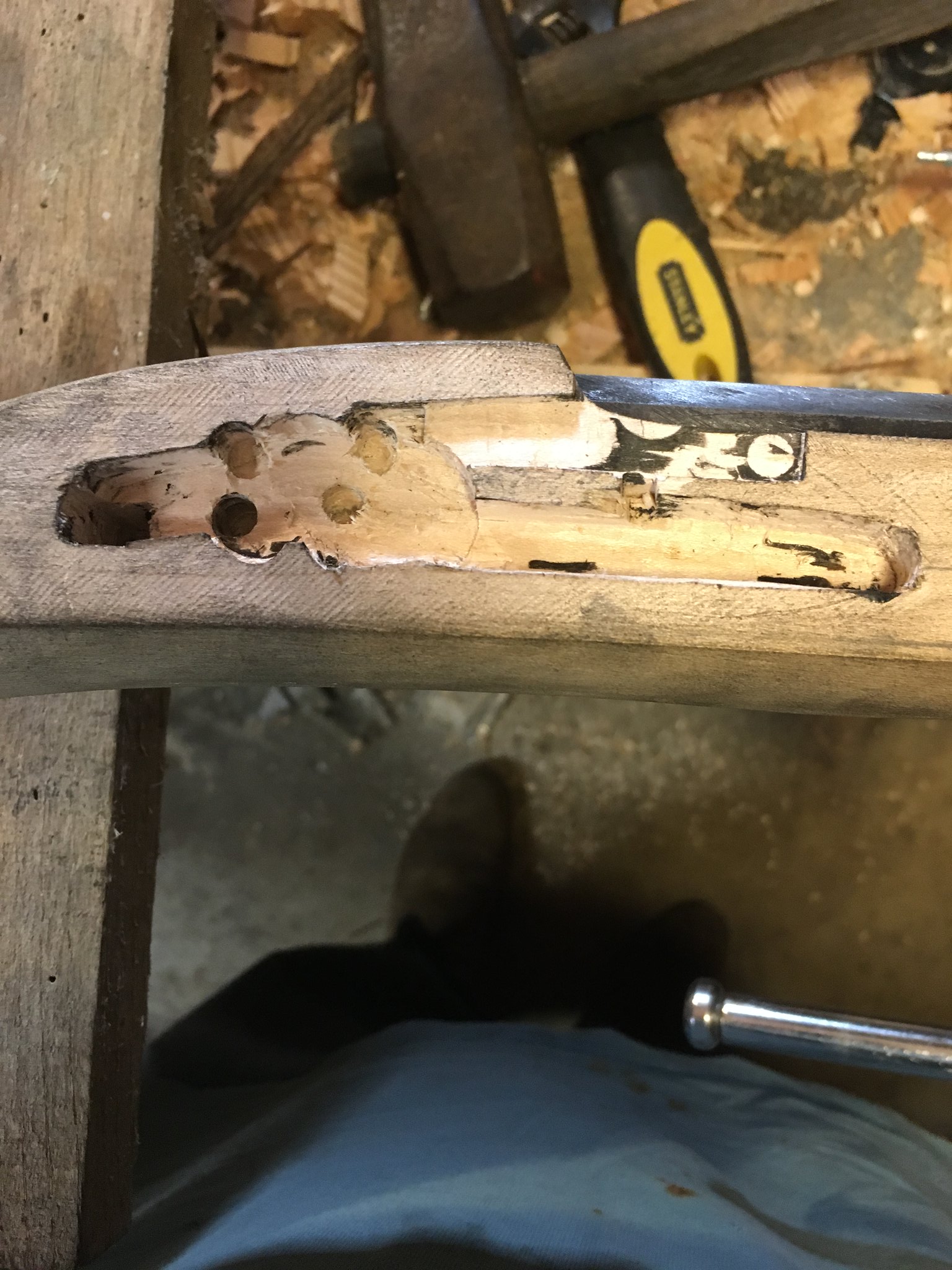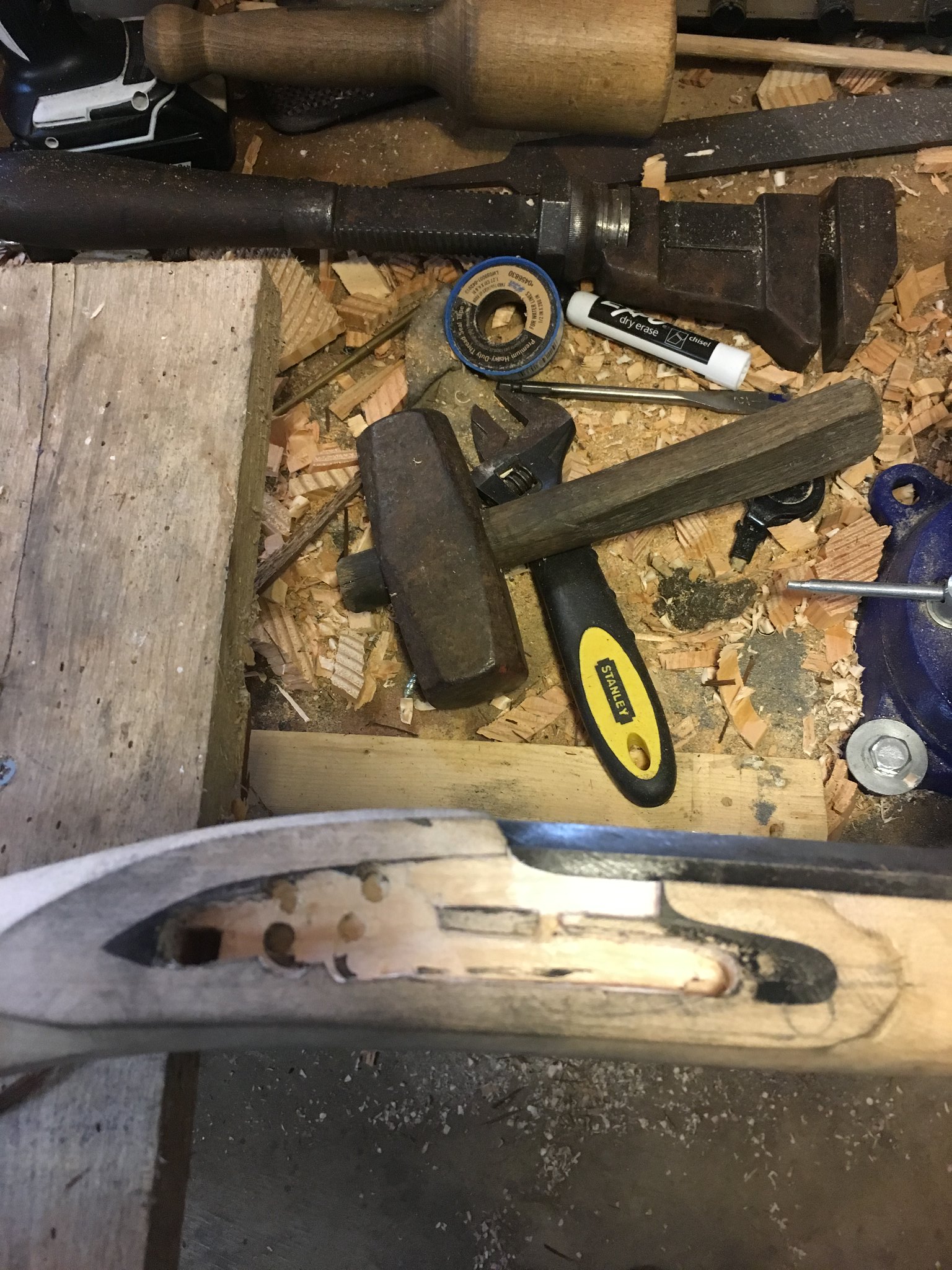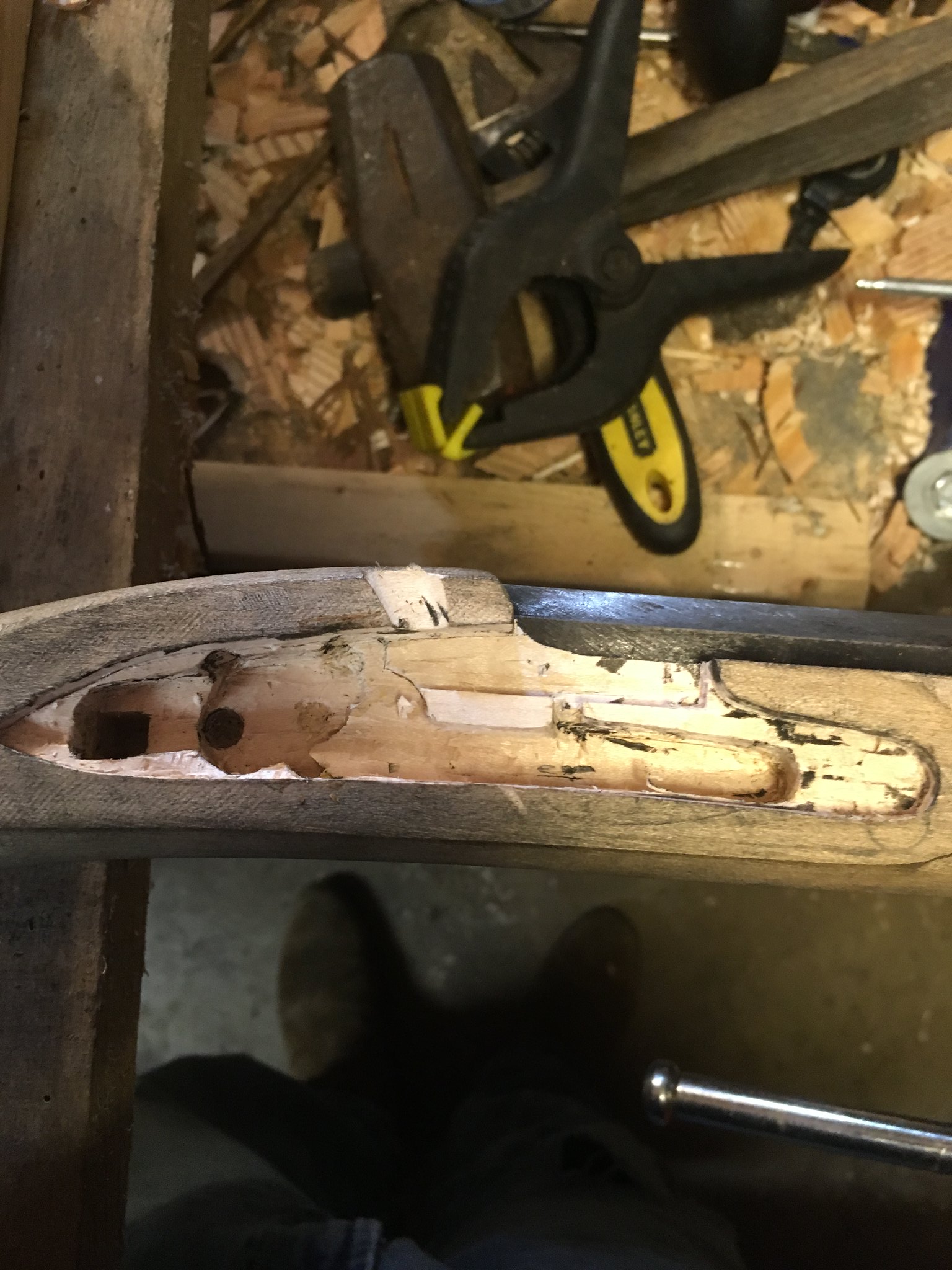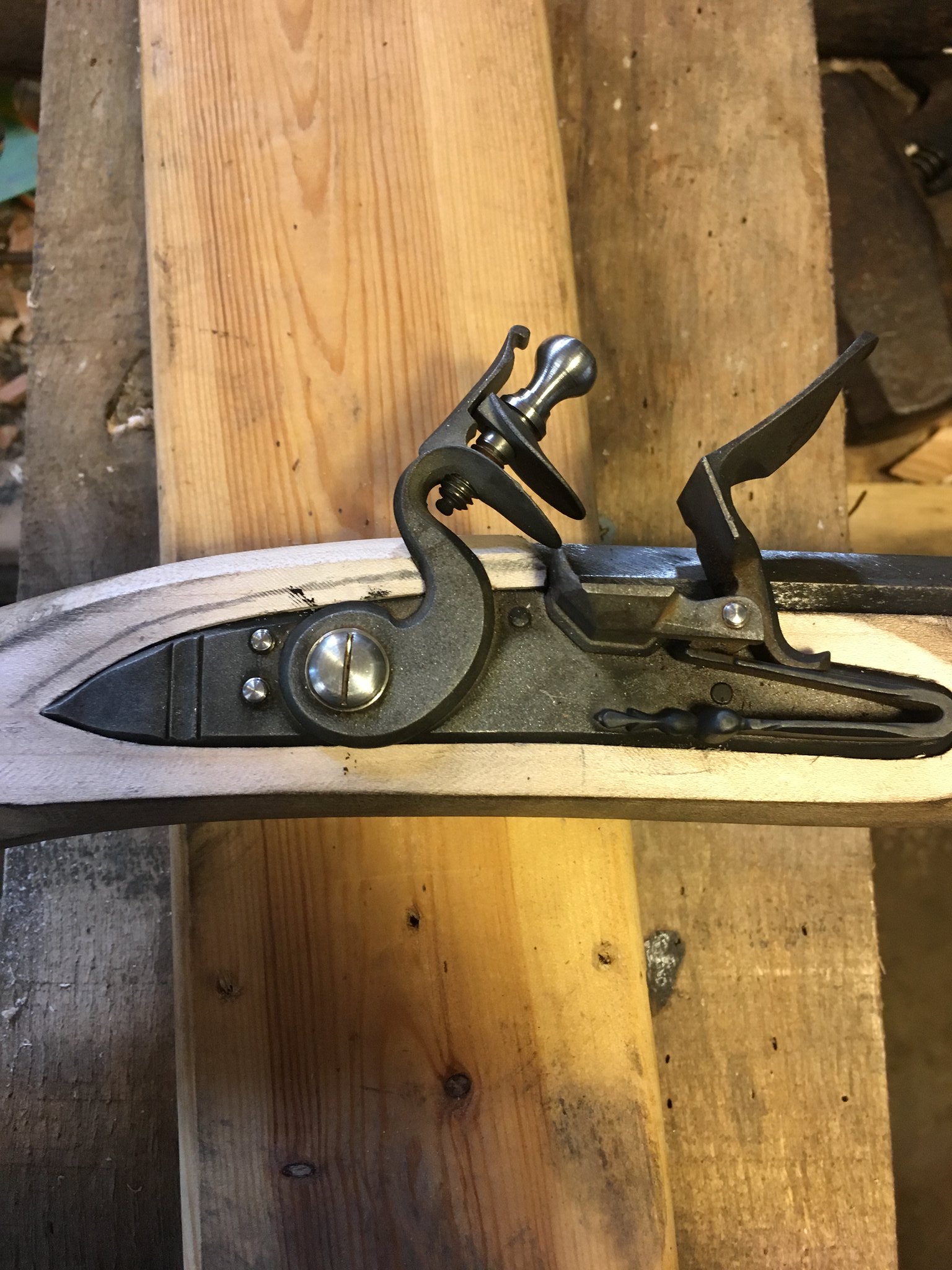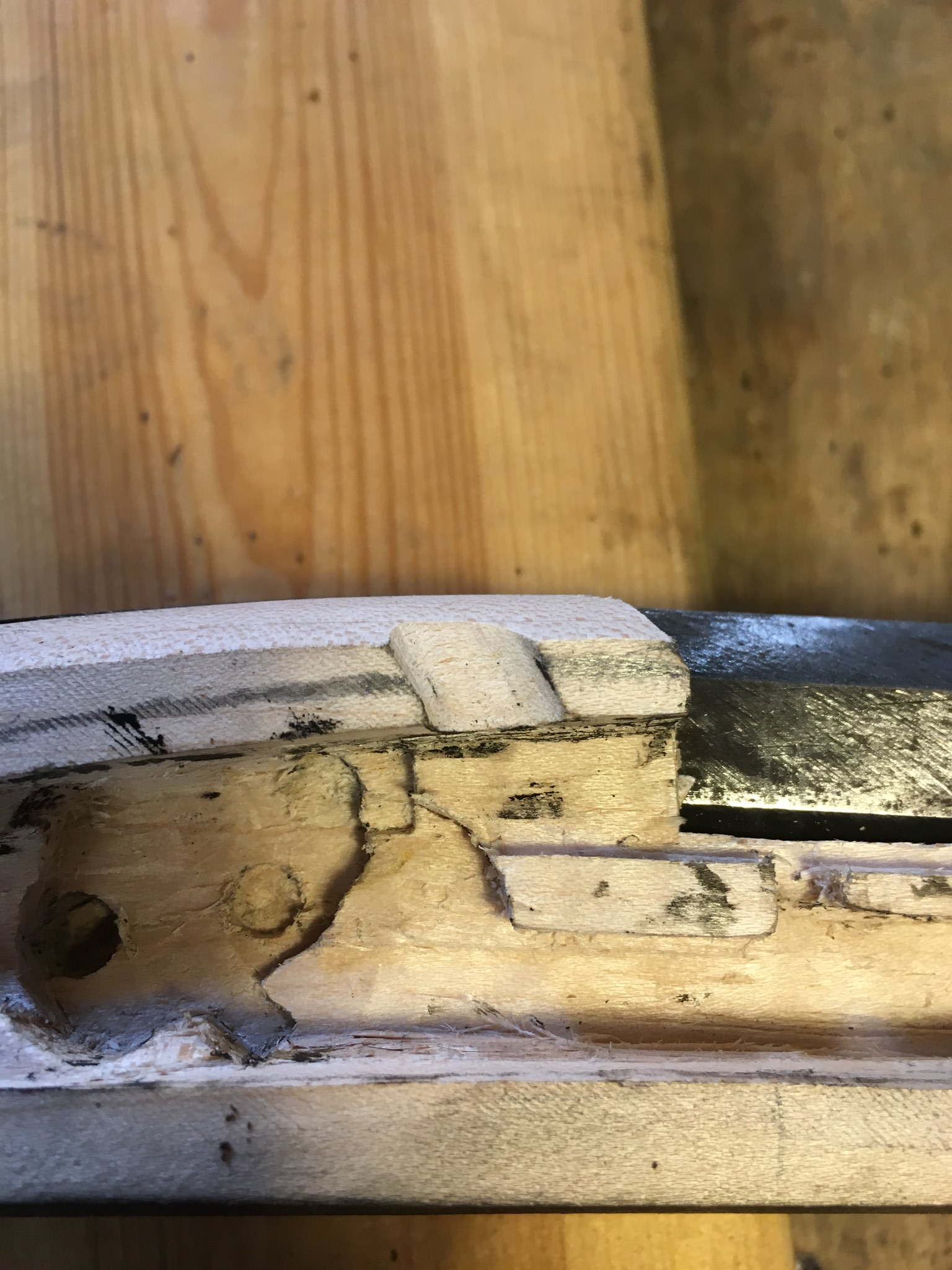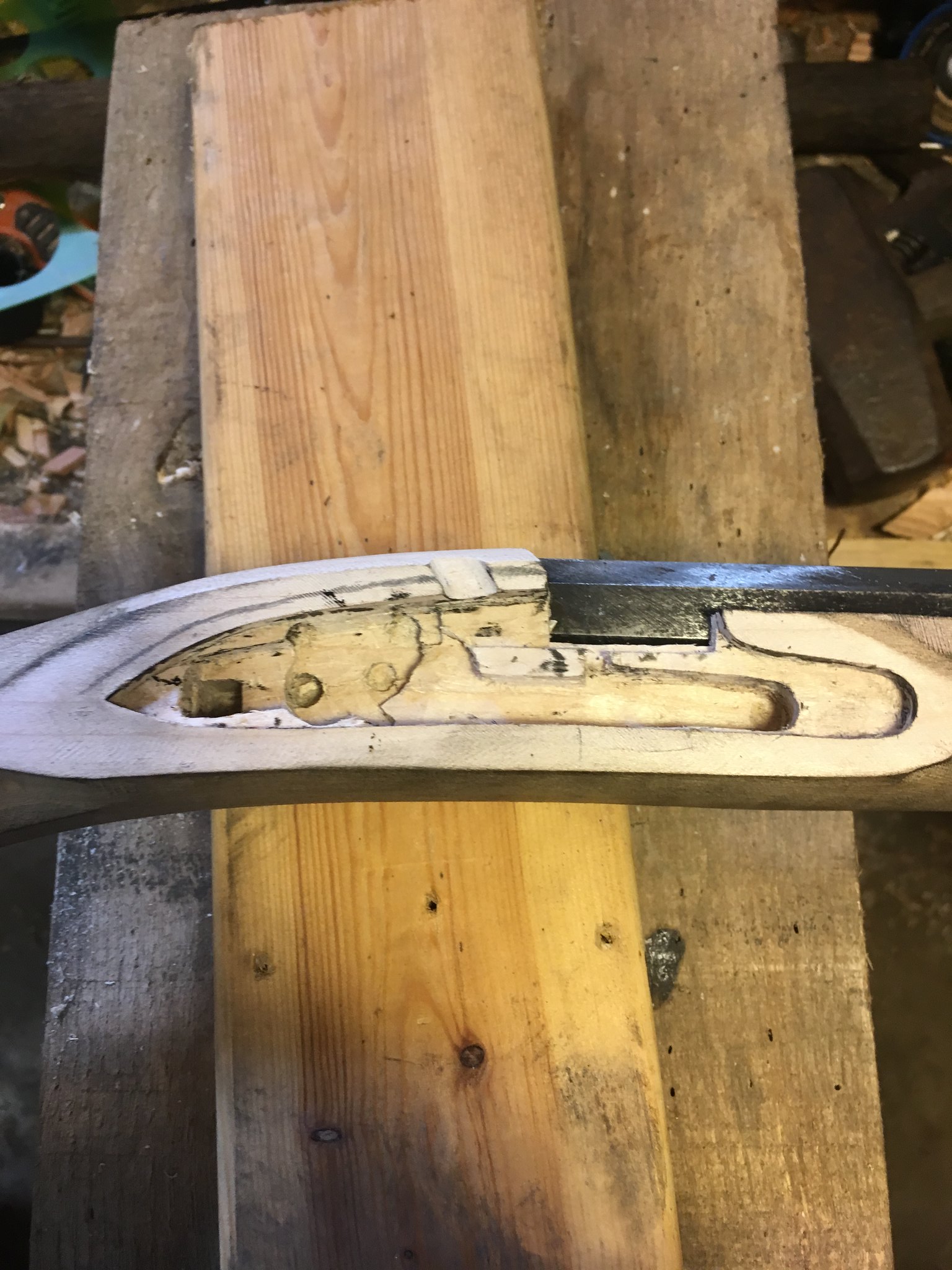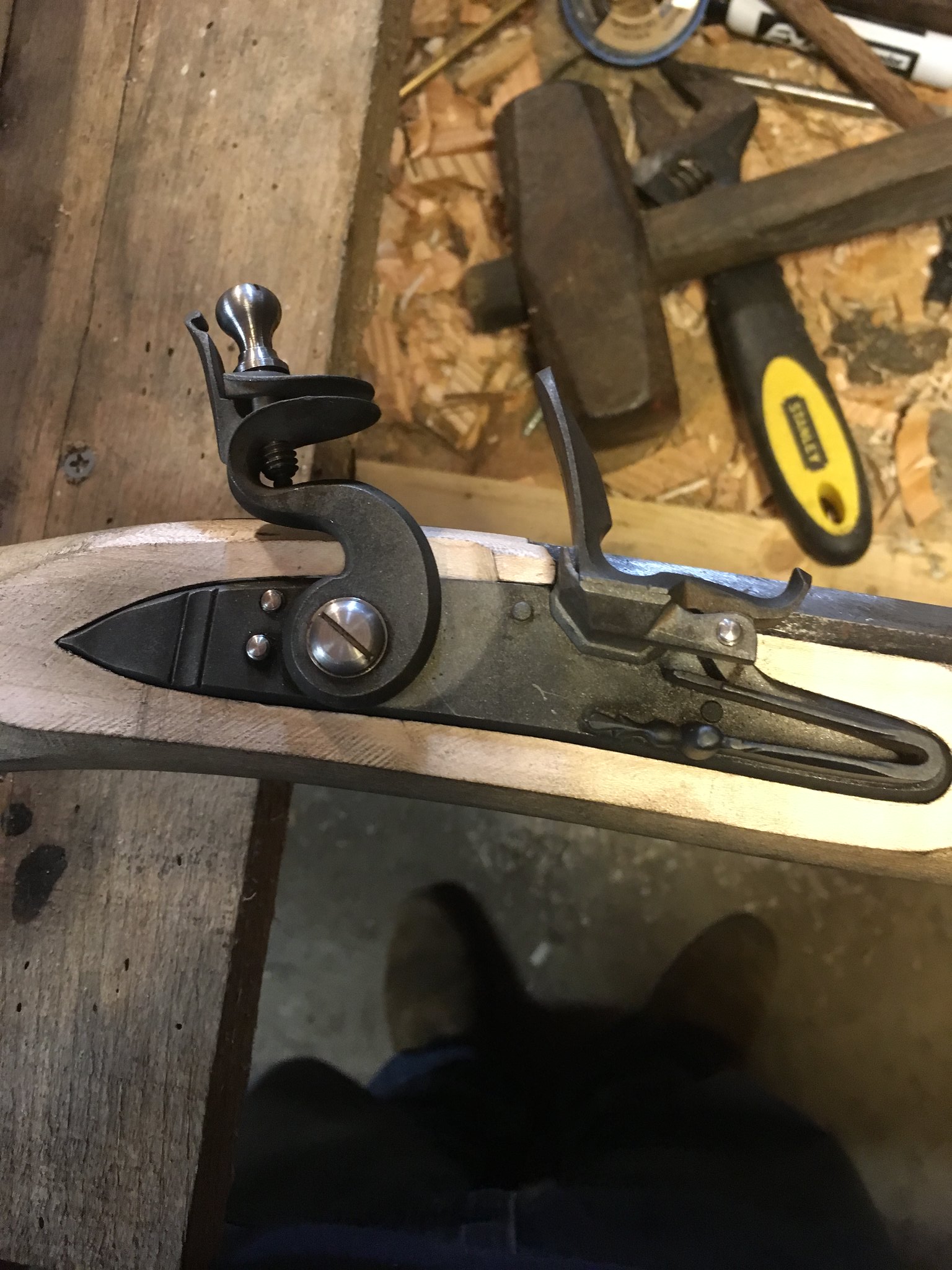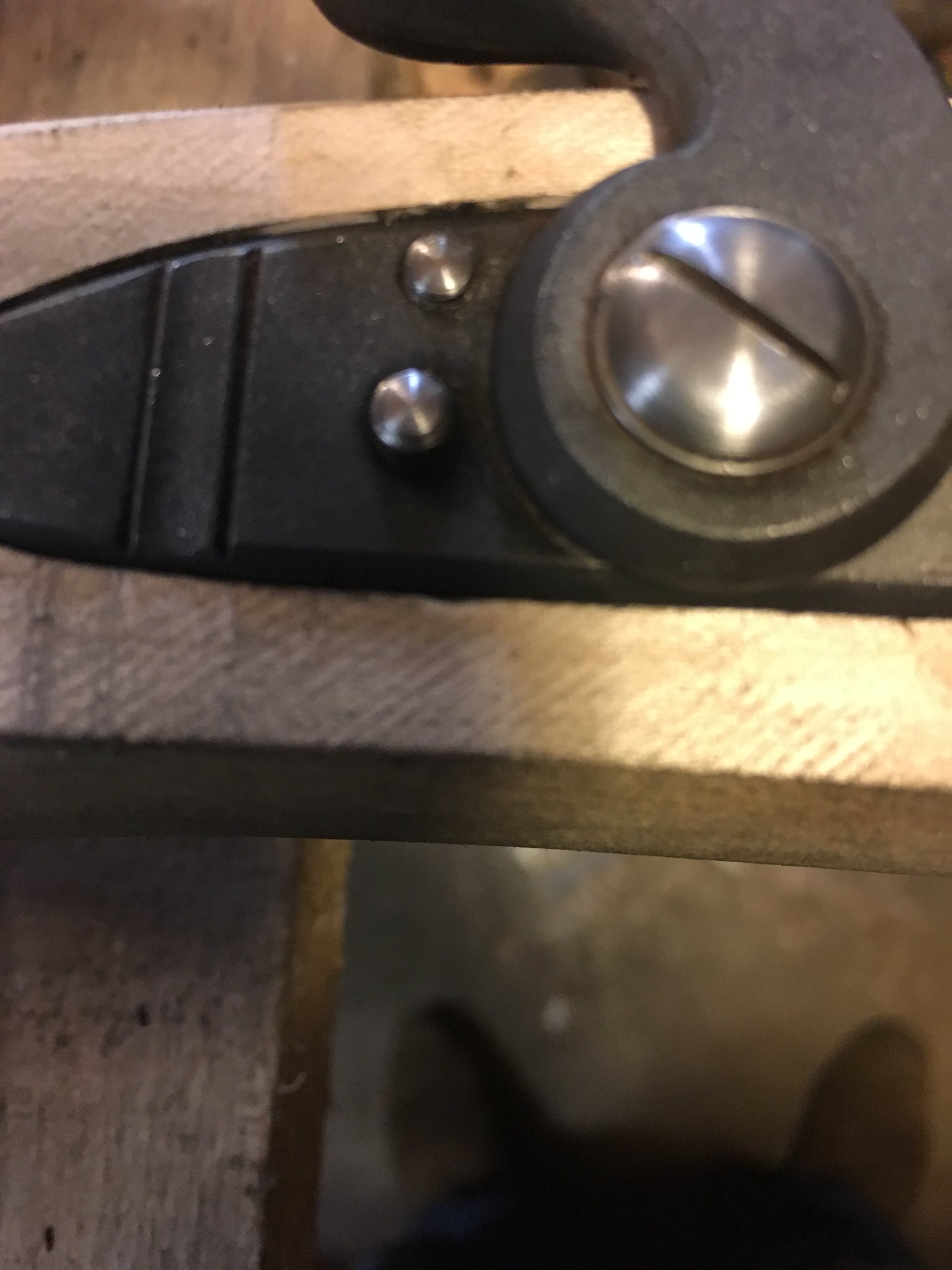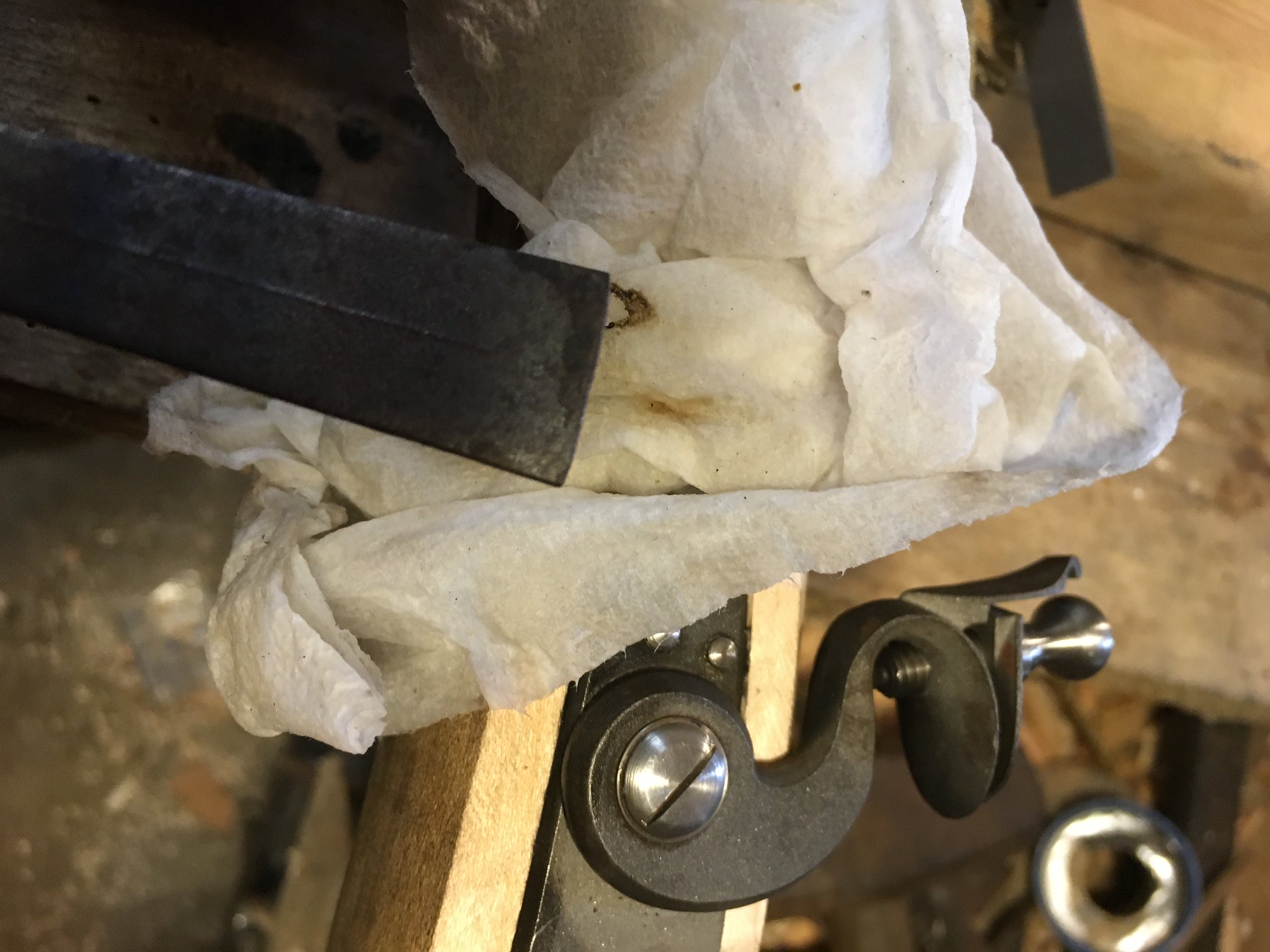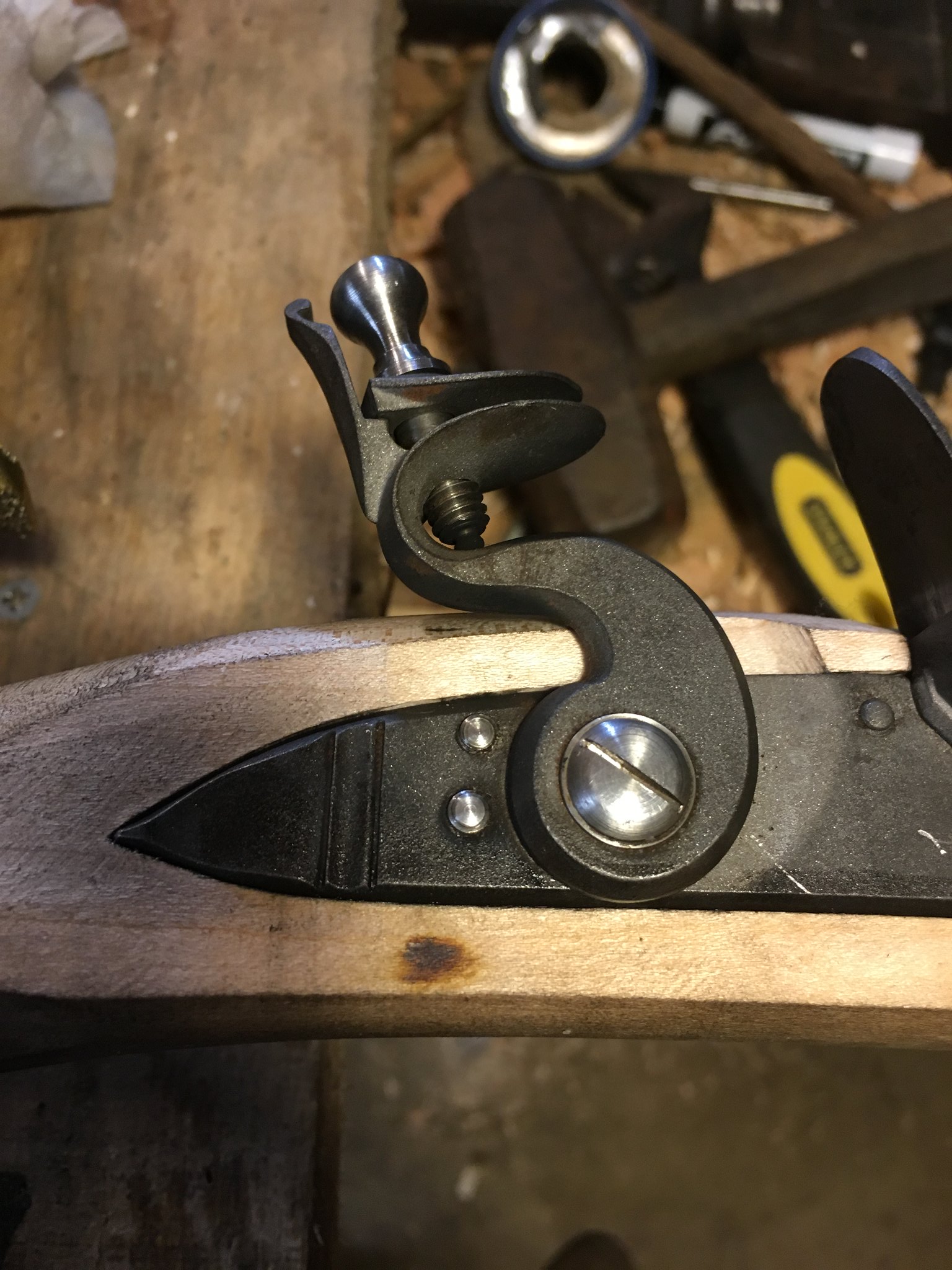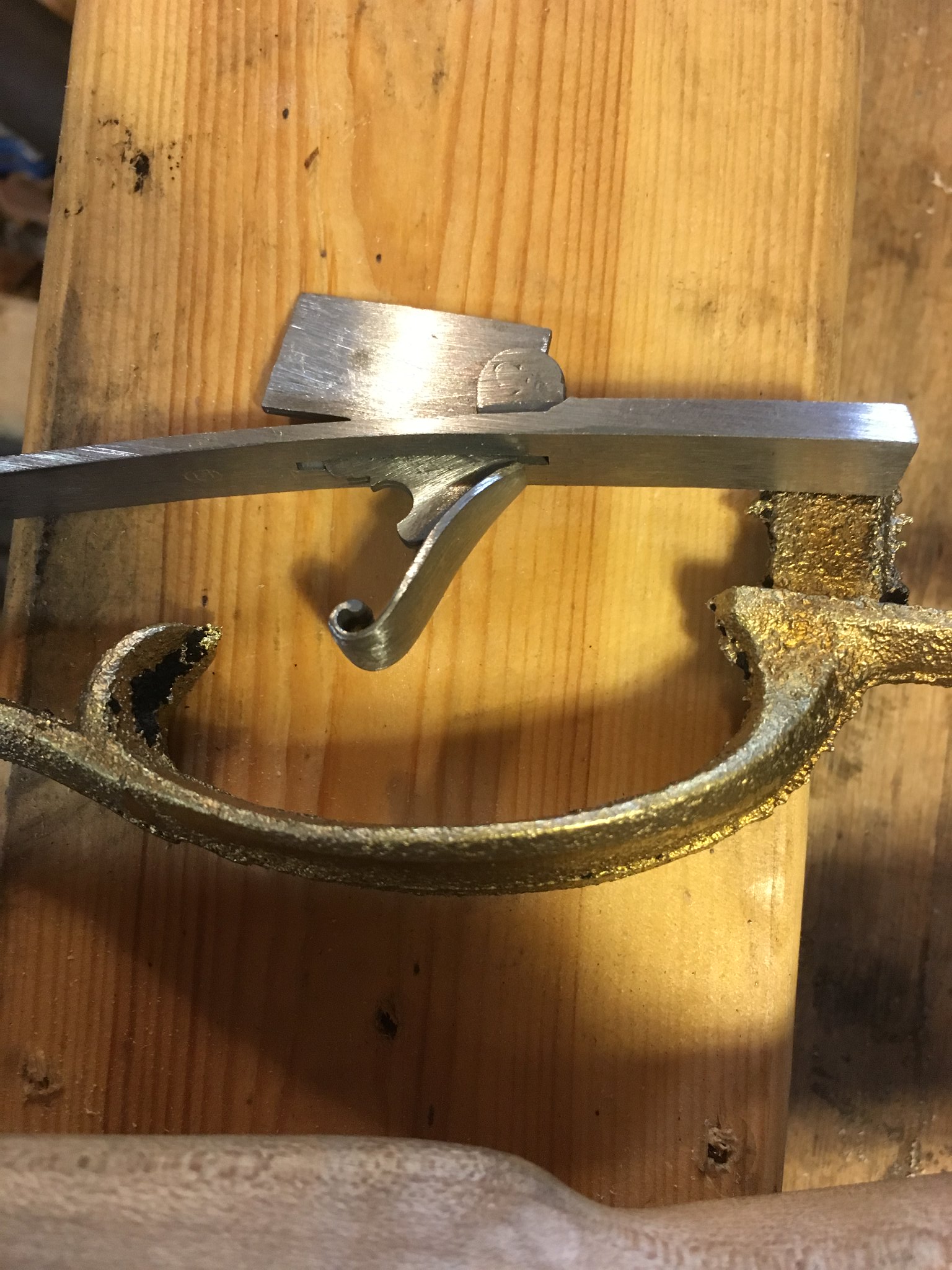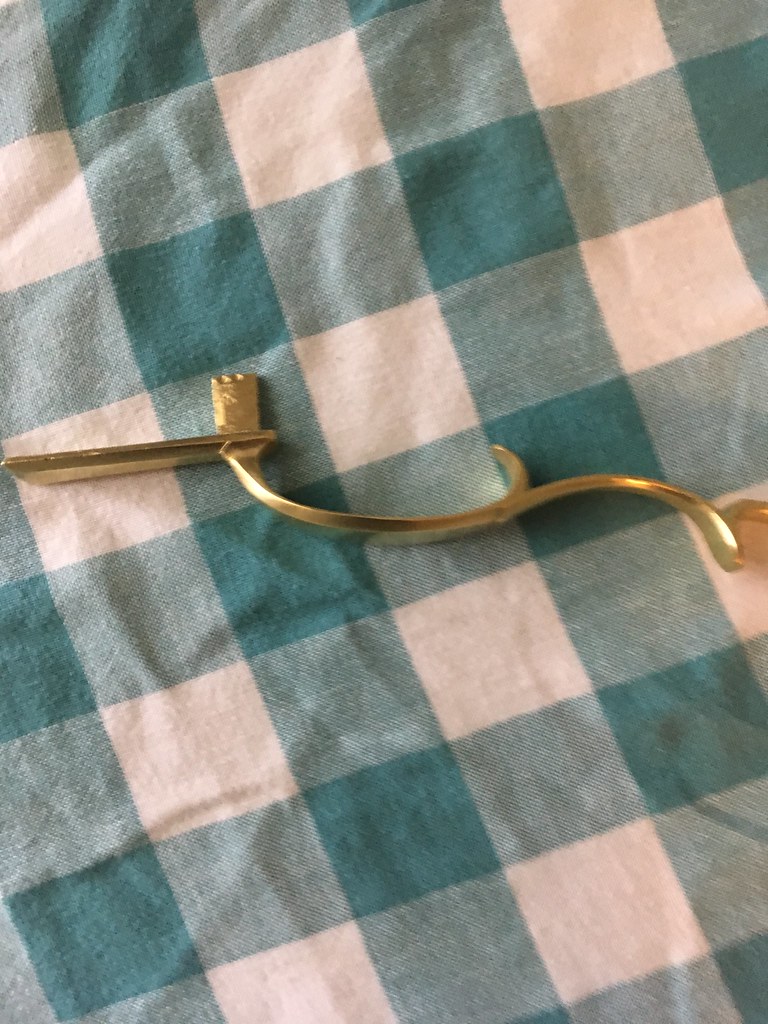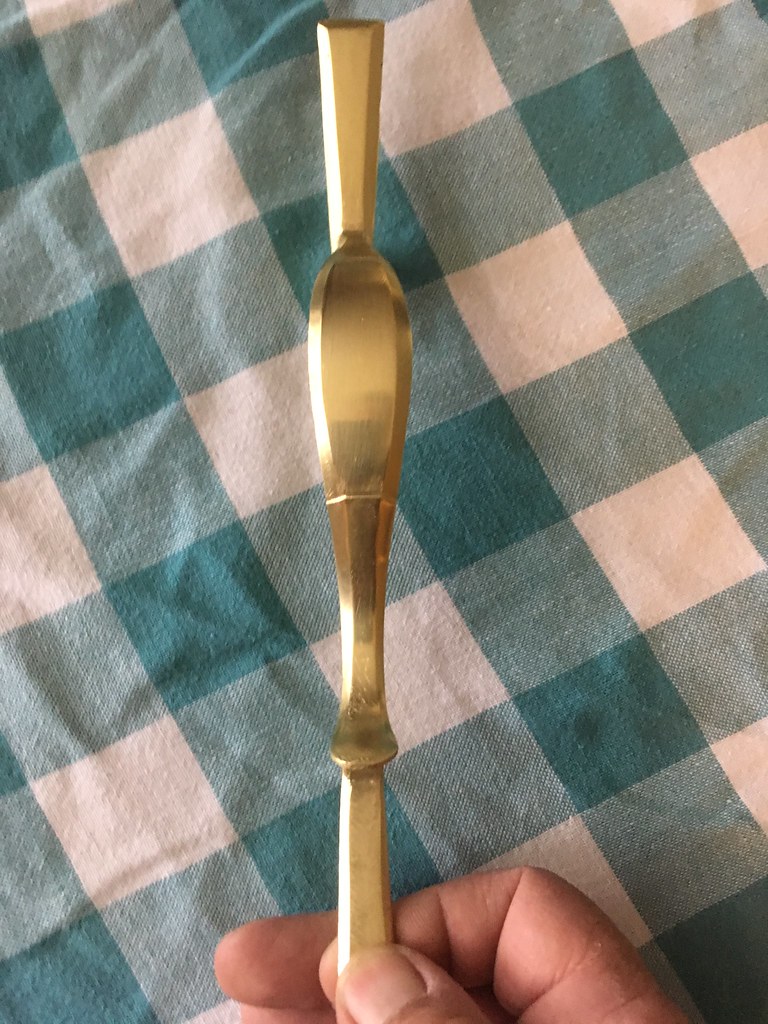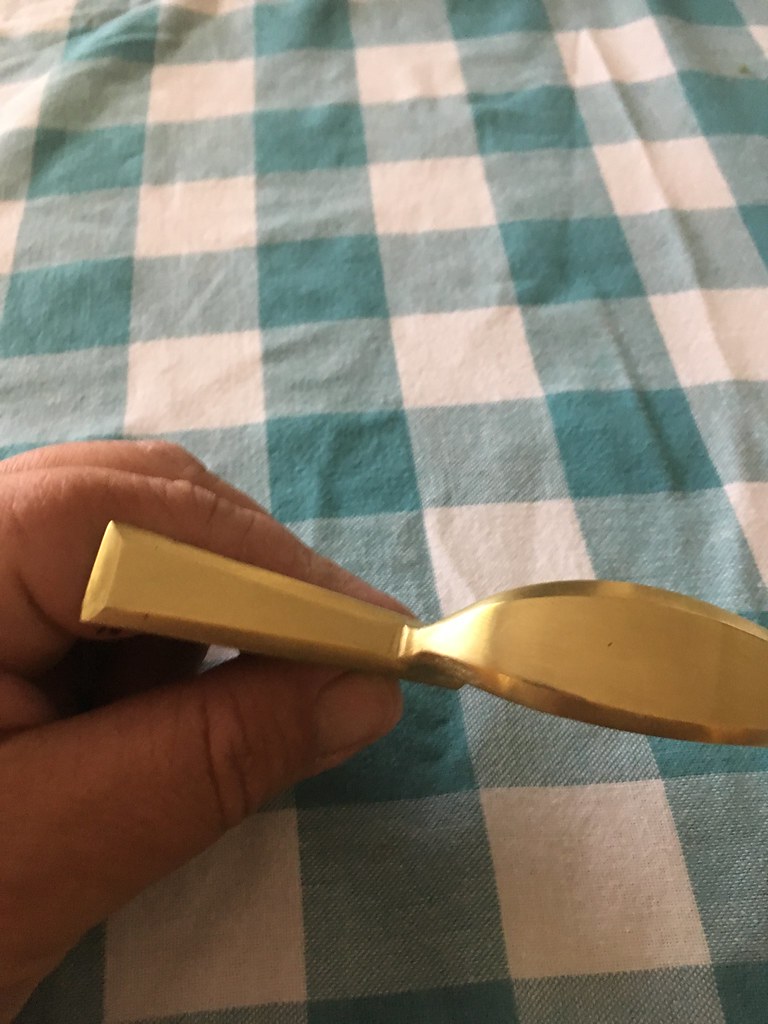Me too Ethan.
The Alligator Horse was coming along great. I had hand inlet the barrel. The tang was down, stock cut out....ramrod drilled lock inlet and was ready to start on the triggers. I could see the rifle coming. The triggerguard was matching up to the step toe...all of that was going to go together marvelous.
Then....the buttstock split in 2 places. The toe and right down the middle of the cheek side nearly to the wrist.

I had it in the back of my Jeep, I bring it every day to the shop I apprentice at. It was not a hot day but it was one of those Alabama days this time of year where it's cool in the morning with a warm afternoon....plus it was rainy and humid. I showed it to Mr. Parker and he said he had never seen a stock do that, never.
So we both looked it over. The bulk if not all the center crack may be in waste material on the cheek side. The toe crack....I don't know. Inletting the butt plate will tell the tale.
So, I'm going to skip the triggers on the Alligator Horse for right now and go straight for the buttplate.
So the Alligator Horse in in dry dock on one of Jim's extra benches awaiting the buttplate. Incidentally the cracks have closed after being in the shop. If this was a customers rifle I would scrap it,and start with new wood.mSince it's going to my brother and and everything else has gone so well I feel it will make a rifle......depends on how the the buttplate goes.
This Track Rifle....
Well there's not really anything Colonial about it. Overall it's not unlike some of the early 19th Century Valley of Virginia rifles, especially the big straight or almost straight barrel. Those rifles tend to be Lancasterian in style. Most have a slightly narrower but with a little more of a slight crescent and of course the round tailed English import lock.
This little Track Rifle I wanted to try some things....carving.....patchbox....
Another thing too....my good friend who is helping me with some home repair that otherwise would cost many thousands of dollars absolutely refuses any reimbursement........He wants a rifle so...my wife said make it so....That's all the excuse I needed to get this parts set.
I wanted to see how good I could make this rifle. As a reenactor there is a mid price range that most reenactors are able to pay. Most of these guys think they can't afford a full custom. So they wind up buying junk from a flunky builder (200 bucks over price of parts) like I did when I did not know any better.
So in a sense this rifle is an experiment.
This rifle, The Alligator Horse for my brother, RCA 119 in Walnut English Fowler furniture Rifle attributed to Newcomer for my Brother in law, and The Feather Rifle for me with a straight rifled barrel Feather profile by Rayl and a stock by Keck round out my personal projects.
The Alligator Horse in in dry dock...119 has the barrel in the blank and all the furniture gathered...Ed is making the Feather Barrel. When I get it, I'll send it off to Knob Mountain sometime next year.
So I have a lot going....trying to get that experience. Plus all the Shop rifles I help with.





